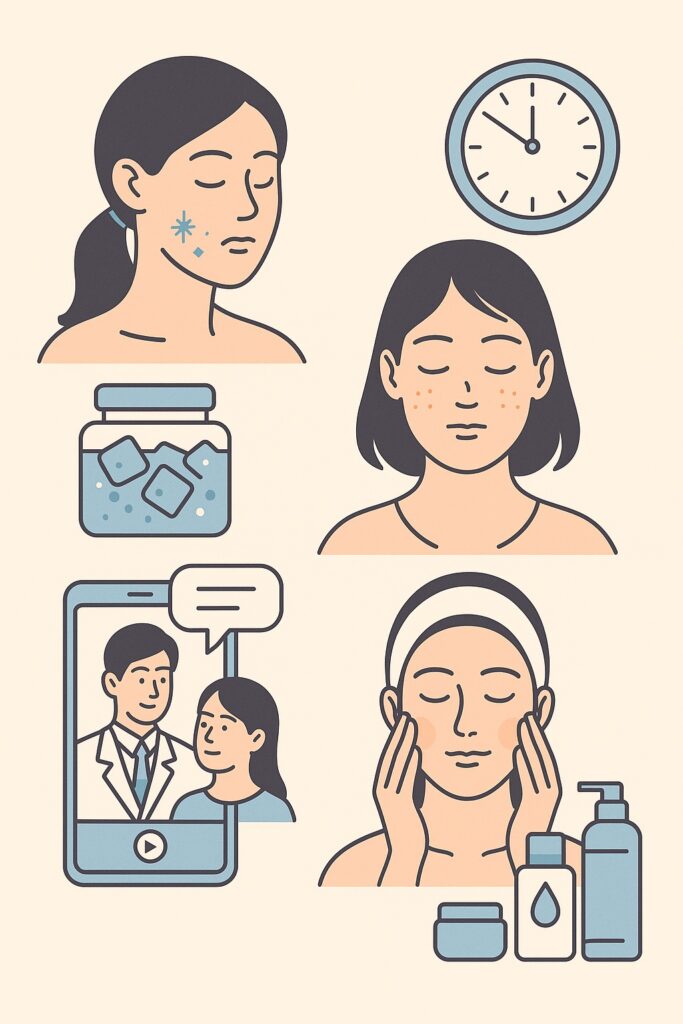

Introduction: Why facial contour aftercare is critical
Facial contouring is more than a one-day transformation. The post-procedure phase plays a key role in defining long-term results. Without proper aftercare, even the best surgical or non-surgical procedures may fall short of expectations. That’s why many clinics emphasize education from the very beginning—giving patients the knowledge they need to heal faster, reduce swelling, and protect long-term results. you with clear, science-backed routines to heal faster, reduce swelling, and protect facial structure changes.
For patients exploring revision or post-contour maintenance, clinics such as DA PRS Facial Contour Revision offer specialized care with a focus on restoring balance and enhancing results. This reinforces the need for proper healing and ongoing facial care after your initial procedure.
1. The first 72 hours: reduce swelling and support healing
Immediately after your procedure, your body reacts by sending fluid and immune cells to the treated areas. This swelling is natural—but if not managed, it can delay healing.
Key tips for the first 3 days:
- Apply a cool compress for 10–15 minutes every hour while awake. Avoid direct ice-to-skin contact.
- Sleep with your head elevated (30–45 degrees). Use 2 pillows or a wedge.
- Avoid salty food, caffeine, and alcohol—they can increase inflammation.
- Follow medication guidelines exactly. Don’t skip prescribed anti-inflammatory or antibiotic treatments.
Before: Many patients simply waited for swelling to go down. After: Now they follow time-specific routines to actively support recovery.
2. One week in: gentle movement and skin maintenance
After the swelling subsides slightly, the next phase begins: skin support and soft-tissue stabilization. Education here ensures you protect your results.
Recommended actions:
- Light walking helps improve circulation and lymphatic drainage.
- Use gentle, non-comedogenic cleansers.
- Start light moisturizing with ceramide-rich creams.
- Avoid long hot showers or facial steaming.
- Wear a sun hat and apply mineral-based SPF 50+ sunscreen when outdoors.
Caution: Avoid massages, facials, or any pressure near the jawline, cheekbones, or chin. These areas are still adjusting to new contours.
Before: Many resumed normal routines too early. After: Now patients extend the healing window with caution and care.
3. Long-term recovery: 2 weeks to 3 months
You may look “healed” on the outside by week 2, but deep-tissue remodeling continues for months. Knowing what to expect in this phase can protect the final outcome.
Focus points:
- Resume mild exercise like yoga or stretching after 2 weeks.
- Avoid weight training or HIIT for 4 weeks to prevent facial strain.
- Reintroduce active skincare slowly (Vitamin C, Retinol) only with your dermatologist’s approval.
- Consider lymphatic-drainage therapy guided by professionals, if recommended.
- Keep photo logs every 2 weeks to track subtle changes.
Before: Patients misunderstood the long timeline of healing. After: Now they stay informed about what internal tissues need to stabilize properly.
4. Tech-enhanced recovery: Devices & in-clinic tools
Top clinics in Korea now integrate high-tech recovery tools to speed up healing and improve results.
Examples:
- LED Light Therapy: Red light helps reduce inflammation and supports collagen regeneration.
- Ultrasound therapy: Devices like LDM improve circulation and reduce fibrosis risk.
- Micropulse RF: Tightens skin gently after swelling subsides.
Patients also receive app-based guidance or check-in schedules synced to treatment milestones.
Before: Aftercare meant only avoiding mistakes. After: Now it includes proactive tech routines that help results settle faster.
5. Emotional recovery and patient mindset
Swelling, bruising, or asymmetry can cause emotional stress—even if they’re normal. That’s why education must include mindset support.
Helpful reminders:
- Healing is not linear; expect ups and downs.
- Avoid constantly checking the mirror or comparing daily photos.
- Reach out to your clinic if anything feels unexpected—they can reassure you.
- Join patient communities if emotional support is helpful.
Before: Patients didn’t talk much about how recovery feels emotionally. After: Now clinics promote self-care and clear expectations as part of healing.
Conclusion: Education makes your results last
Facial contouring (안면윤곽) creates structure, but your habits shape the final look. With expert guidance, clear instructions, and tech support, patients heal faster and maintain their results longer. Clinics lead the way by combining revision expertise with personalized education empowering patients to protect their investment in beauty, wellness, and long-term facial harmony. to protect their investment in beauty, wellness, and long-term facial balance.
Before: Healing was uncertain and stressful. After: Now, it’s structured, informed, and empowered by education.
RELATED POSTS
View all


